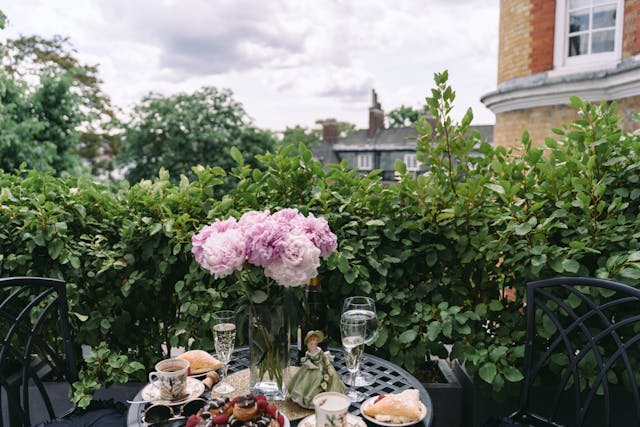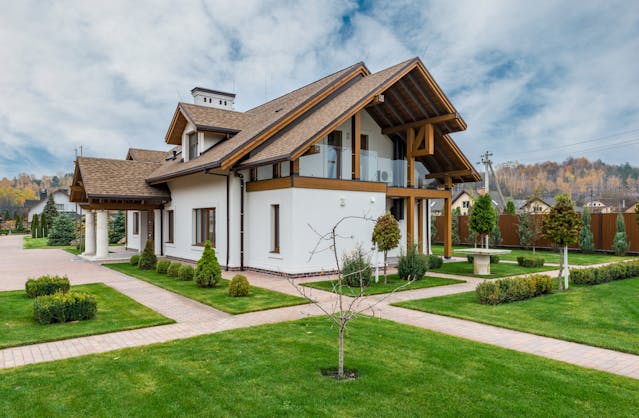The majority of garden-related tasks, such as browsing among them, removing weeds, starting new seedlings, and gathering a bounty of flowers, fruits, and vegetables, are quite contemplative. However, even the most aimless garden needs some forethought and direction.
This list of the most popular garden varieties is guaranteed to be helpful if you’re unsure of where to take your garden next or need inspiration to start one!
These garden design ideas, which range from tropical to interior, may occupy a whole yard or just a section of it. If you’d like, design a landscape that is just devoted to the many varieties of roses. Or, if you can’t settle on just one concept—or flower, for that matter—think about creating zones in your backyard. Maybe a cottage garden with a vegetable patch?
This list of the top 31 garden design styles has something to fit every kind of gardener and every size garden, thus there is sure to be a style that will work for your house and environment.

What garden layout should I use?
The design and style of your garden, together with the plants you want to plant, will determine how it is laid out. Remember to start with what would work best for your site!
For vegetables, the simplest garden design is a long row of plants planted north to south, which maximizes air circulation and light exposure. On the other hand, you should designate certain “zones” for entertaining, such an outdoor kitchen or pergola, if you believe that your garden will be used mostly for entertaining.
Many prefer to add “borders” as well, such garden edging or hedges around certain places.
Explore 15 of the most well-liked garden design concepts and designs.
Garden that is easily accessible
Situated 7km away from Melbourne’s central business district, Kate Herd’s riverbank garden is a verdant, expansive space spanning over 2.4 hectares, bursting with a diverse array of both local and exotic flora. But it also happens to be accessible in addition to these features. Wheelchair-accessible granitic sand walkways and dry-stone walls spiral downhill to the billabong below.
Terrace garden
It might be difficult to be passionate about gardening in the city, where high-rise living and shoebox flats are the norm. However, if you’re fortunate enough to have even a little balcony, you may still exercise your green thumb. First things first: measure the amount of light and wind that your balcony receives throughout the day, then start selecting plants that will thrive in those circumstances. Here are three essential stages for designing a balcony garden that works.
Coastal landscape Landscaper Matt Leacy thinks that choosing the right plants is essential to designing a successful coastal garden. Select plants that can survive windy and saline environments, he advises. Popular selections include both native Australian flora and tropical plants. See how Matt turned this drab backyard into a lively seaside retreat that’s ideal for hosting guests.
Container Garden
Potted gardens, often known as container gardens, are very adaptable. They are not only excellent for novice gardeners, but they can be made on either the smallest balcony or the biggest verandah, both inside and outdoors. The fact that they are portable is another benefit. For instance, this container garden in Katoomba is very pleasing. These are the greatest fruits and vegetables to grow in containers if you enjoy the notion of cultivating food plants in pots.
rural garden
There are many sizes and forms for country gardens. The formal English-style garden, with exotic plants like wisteria and roses, contrasts with the contemporary Australian rural garden, which has native plants and drought-tolerant decorative grasses. Regardless of your personal preference, country gardens serve as the setting for a lot of childhood memories and will remain popular for many more generations.
Hamptons landscape
It’s no secret that Australia’s environment is ideal for Hamptons-style interior design, but what’s often overlooked is how well this light and airy aesthetic works outside the house. This Hamptons-style garden combines formal, formal, and luxurious resort elements with organized plants, feature trees, lush grass, and well-kept hedges to create a really livable garden design that works in any size area.

Modern minimalist garden
The secret to creating a flawless modern minimalist garden is to emphasize texture and greenery over large quantities of eye-catching flowers. Instead than attempting to take center stage on their own, plants are placed to enhance and reflect the house’s architectural elements. This modern Sydney garden has three potted succulents, Buxus plantings, and a variety of bamboo plants. Richard Unsworth of Garden Life and landscape designer Kate Seddon are two prominent supporters of this aesthetic.
quaint garden
Ornamental, well-kept estate gardens are the opposite of cottage gardens. This place does not have artificial lakes or mazes. Instead, there are abundantly planted flowers, climbing roses, and a heady aroma of lavender. All the elements of a lovely cottage garden are there when you add a fruit tree, vegetable patch, and herb garden. Many of the plants in this nostalgic cottage garden on the Mornington Peninsula were gifts from friends and relatives.
Garden in the courtyard
Gardens in courtyards see the outside world as an extension of the house. With its opulent bathing area surrounded by trailing plants and enormous feature pots, this seaside outdoor bathroom is a terrific example of how to create a welcoming spa-like atmosphere—ideal for lounging on a cool summer’s day with a book.
Garden that can withstand drought
Making a garden that uses less water—that is, one that is both water-wise and drought tolerant—is crucial due to rising temperatures, drought conditions, and water constraints. According to landscape designer Adam Fisher, “you can create any sort of garden – traditional, pretty, formal or contemporary – using water-wise plants.” Thankfully, a large number of natural plants found in Australia readily meet the requirements. These gardens are very little maintenance, which is their finest feature!
Herb garden
Purchasing a variety of herbs at the store may significantly increase the cost of your weekly groceries; thus, starting your own herb garden from seedlings is a wise financial move. You may grow herb gardens inside in tiny pots on your kitchen windowsill or outside in a garden bed. Here are some beginner-friendly herb species that are simple to cultivate as well as some indoor herb gardening advice.
Indoor gardening
An indoor plant might be the ideal answer if your house is perfectly decorated but yet seems empty. These days, indoor vegetation is standard in contemporary houses. This is because plants not only look great but also filter the air! Searching for an easy-to-start indoor plant? Try a plant from our list of the top 15 indoor plants.
formal garden
Formal gardens consist of five main components, two of which are water features and traditional plant selections. Native plants that need less water have started to replace exotic species in contemporary Australian formal gardens. Paul Bangay and Peter Fudge are the masters of this technique.
Low-maintenance landscape
Do you love gardening but have a garden? Or is it because you travel too much to spend your weekends dawdling in the garden? So it’s important to design a low-maintenance yard from the beginning. Make sure to choose sturdy, evergreen plants and create a healthy soil structure. These are [five methods for making a self-sufficient, low-maintenance garden].

Japanese-style garden
Inspired by Japanese gardens, landscape designer Christian Jenkins from Geelong developed this fantastical setting for Melbourne’s 2018 International Flower & landscape exhibition in support of Beyondblue. The space includes ceramic pebbles and a dye-tinted pond. Bamboo, Japanese maple, bridges, ponds, and huge stones are common features in Japanese gardens.
well-kept garden
You may anticipate well groomed lawns and perfectly square hedges that seem like they were cut with a laser in a well-kept landscape. Yet there’s more to the admiration of well-kept gardens than just their majestic look. In addition to being useful, they allow a large area of land to be divided into a number of “outdoor rooms,” each with a distinct purpose. Here, a rough hillside was turned into a well-kept garden that the owners now enjoy all year round.
native garden in Australia
There has finally been a change in the long-standing preference for traditional and foreign plants over our own natural flora. Australian native gardens are becoming more and more popular among both amateur and professional landscapers due to its beauty as well as their hardiness and resilience to drought. Edwina Bartholomew, the Sunrise presenter, designed the stunning landscape at her Blue Mountains farm house after consulting with Wariapendi Native Nursery in the Southern Highlands.
a garden that is organic
Perhaps more than any particular garden design, creating an organic garden requires dedication. However, this is a trend that is quickly taking over gardens around the nation. An organic gardener is dedicated to using natural remedies to combat issues including disease, weeds, and pests. This produces fruits and vegetables that are healthier, benefits the environment, and will continue to provide food for bees, birds, and other beneficial creatures. Starting a compost and employing natural pest control techniques is an excellent place to start.
